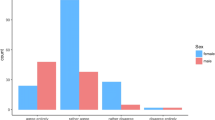Abstract
A methodology to automatically detect potential retakes in digital imaging, using the Digital Imaging and Communications in Medicine (DICOM) header information, is presented. In our hospital, neither the computed radiography workstations nor the picture archiving and communication system itself are designed to support reject analysis. A system called QCOnline, initially developed to help in the management of images and patient doses in a digital radiology department, has been used to identify those images with the same patient identification number, same modality, description, projection, date, cassette orientation, and image comments. The pilot experience lead to 6.6% and 1.9% repetition rates for abdomen and chest images. A thorough analysis has shown that the real repetitions were 3.3% and 0.9% for abdomen and chest images being the main cause of the discrepancy being the wrong image identification. The presented methodology to automatically detect potential retakes in digital imaging using DICOM header information is feasible and allows to detect deficiencies in the department performance like wrong identifications, positioning errors, wrong radiographic technique, bad image processing, equipment malfunctions, artefacts, etc. In addition, retake images automatically collected can be used for continuous training of the staff.




Similar content being viewed by others
References
British Institute of Radiology: Quality Assurance in the Diagnostic X-ray Department, London: British Institute of Radiology, 1998
Dunn MA, Roger AT: X-ray film reject analysis as a quality indicator. Radiography 4:29–31, 1998
European Commission: Council Directive on Health Protection of Individuals Against Dangers of Ionising Radiation in Relation To Medial Exposures, and Replacing Directive 84/466/EURATOM, 97/43 Euratom, Brussels: European Commission, 1997
Boone JM, Cody DD, Fisher JR, et al: Quality Control in Diagnostic Radiology. Diagnostic X-ray Imaging Committee Task Group 12, AAPM report no. 74. American Association of Physicists in Medicine, Madison, WI: Medical Physics Publishing, 2002
Hardy M, Persaud A: The challenge of governance: achieving quality in diagnostic imaging. Radiography 7:159–163, 2001
Arvanitis TN, Parizel PM, Degryse HR, Schepper AMA: Reject analysis: a pilot programme for image quality management. Eur J Radiol 12(3):171–176, 1991
Gadeholt G, Geitung JT, Göthlin JH, Asp T: Continuing reject-repeat film analysis program. Eur J Radiol 9(3):137–141, 1989
Pitcher EM, Wells PN: Quality assurance and radiologic audit. Curr Opin Radiol 4(3):9–14, 1992
Freedman M, Steller D, Jafroudi H, Mun SK: Quality control of storage phosphor digital radiography systems. J Digit Imaging 8(2):67–74, 1995
Honea R, Blado ME, Ma Y: Is reject analysis necessary after converting to computed radiography? J Digit Imaging 15(Suppl 1):41–52, 2002
Nol J, Isouard G, Mirecki J: Digital repeat analysis; setup and operation. J Digit Imaging 19(2):159–166, 2006
International Commission on Radiological Protection (ICRP publication 93): Managing patient dose in digital radiology. A report of the International Commission on Radiological Protection. Ann ICRP 34(1):1–73, 2004
Vano E, Fernandez JM, Ten JI, et al: Dosimetry and image quality in digital radiology from online audit of the X-ray system. Radiat Prot Dosim 117(1–3):199–203, 2005
Faulkner K: The DIMOND project and its impact on radiation protection. Radiat Prot Dosim 117(1–3):3–6, 2005
SENTINEL: Safety and Efficacy for New Techniques and Imaging using New Equipment to Support European Legislation. European Coordination Action, (2005–2007). http://www.sentinel.eu.com/Documents/Project+Presentation.pdf. Accessed 7 April 2007
Peer S, Peer R, et al: Comparative reject analysis in conventional film-screen and digital storage phosphor radiography. Eur Radiol 9(8):1693–1696, 1999
Peer S, Peer R, et al: Comparative reject analysis in conventional film-screen and digital storage phosphor radiography. Radiat Prot Dosim 94(1–2):69–71, 2001
Acknowledgment
This study was partially funded under the European Commission Coordination Action SENTINEL (FI6R-012909) and by the Spanish grant FIS2006-08186 (Ministry of Education and Science).
Author information
Authors and Affiliations
Corresponding author
Rights and permissions
About this article
Cite this article
Prieto, C., Vano, E., Ten, J.I. et al. Image Retake Analysis in Digital Radiography Using DICOM Header Information. J Digit Imaging 22, 393–399 (2009). https://doi.org/10.1007/s10278-008-9135-y
Received:
Revised:
Accepted:
Published:
Issue Date:
DOI: https://doi.org/10.1007/s10278-008-9135-y




